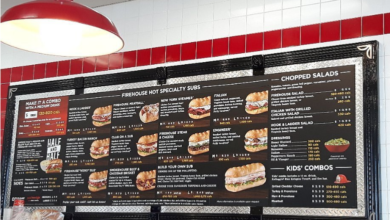The Enduring Appeal of restaurán

What’s your favorite place to eat? For many of us, it’s not just about the food but the whole experience, and that’s where the magic of restaurants, or “restauráns,” comes in. Restaurants are more than just places to grab a bite—they’re cultural hubs, social meeting points, and sometimes, even second homes. Let’s dive deep into the world of restauráns and explore their charm, significance, and the secrets behind their success.
History of restaurán
Origin of Restaurants
The concept of restaurán dates back to ancient times when inns and taverns provided travelers with food and shelter. However, the modern restaurant as we know it began in 18th-century France. The term “restaurant” comes from the French word “restaurer,” meaning “to restore,” initially referring to a highly concentrated, affordable broth sold by street vendors that was supposed to “restore” one’s health.
Evolution through the Centuries
From humble beginnings, restaurán evolved dramatically. By the 19th century, Paris boasted numerous establishments offering a variety of dishes, setting the standard for modern dining. The idea spread globally, with each culture adding its unique twist, from American diners to Japanese sushi bars, making restaurants a universal experience.
Types of Restaurants
Fast Food Restaurants
Fast food is all about speed and convenience. These restaurants offer quick service and are popular for their affordability and consistency. Think McDonald’s, Burger King, and other chain restaurants where you know exactly what you’re getting.
Casual Dining
Casual dining restaurants strike a balance between fast food and fine dining. They offer a relaxed atmosphere with moderately priced food. Examples include Olive Garden and TGI Fridays, where you can enjoy a sit-down meal without breaking the bank.
Fine Dining
Fine dining is the epitome of luxury in the restaurant world. These establishments offer exquisite dishes, impeccable service, and elegant ambiance. Perfect for special occasions, they often have a dress code and reservations are usually required. Think of places like The French Laundry or Le Bernardin.
Cafés and Bistros
Cafés and bistros are cozy spots often associated with European culture. Cafés typically serve coffee and light snacks, while bistros offer heartier meals in a casual setting. They are great for a relaxed meal or catching up with friends over coffee.
Specialty Restaurants
Specialty restaurants focus on a specific type of cuisine or dining experience. This could range from sushi bars to vegan eateries or steakhouses. They cater to particular tastes and often provide a more curated menu.
Key Elements of a Successful Restaurant
Location
In real estate, they say “location, location, location,” and the same goes for restaurants. A prime location can attract more customers and increase visibility. Being in a bustling area or a popular neighborhood can make a huge difference.
Ambiance
The ambiance of a restaurant sets the tone for the dining experience. From lighting and music to décor and seating arrangements, every detail contributes to creating a welcoming environment that can enhance the overall experience.
Menu
A well-crafted menu is crucial. It should not only reflect the restaurant’s theme but also offer a variety of dishes that appeal to different tastes. Keeping the menu updated and introducing seasonal specials can keep customers excited.
Service Quality
Good service can make or break a dining experience. Training staff to be attentive, friendly, and knowledgeable about the menu is essential. Exceptional service can turn first-time visitors into regular customers.
Restaurant Management
Roles and Responsibilities
Running a restaurán involves various roles from the chef and kitchen staff to the front-of-house team including waiters and hosts. Effective management ensures that all these roles work seamlessly together.
Staff Training
Regular training is vital to maintain high standards of service. This includes everything from cooking techniques to customer service skills. Investing in staff development can lead to better performance and job satisfaction.
Financial Management
Keeping a close eye on finances is crucial. This includes budgeting, managing expenses, and pricing menu items correctly to ensure profitability while providing value to customers.
Customer Relations
Building strong relationships with customers can foster loyalty. Listening to feedback, addressing complaints promptly, and showing appreciation through gestures like loyalty programs can enhance customer satisfaction.
Trends in the Restaurant Industry
Farm-to-Table Movement
This trend emphasizes using locally sourced, fresh ingredients. It supports local farmers and promotes sustainability. Customers appreciate knowing where their food comes from and enjoying healthier, organic options.
Technology in Restaurants
From online reservations to digital menus and contactless payments, technology is transforming the dining experience. Mobile apps for ordering and delivery services have become essential, especially in the wake of global events.
Health and Sustainability Trends
With growing awareness about health and environmental issues, many restaurants are offering healthier options and sustainable practices. This includes vegetarian and vegan menus, as well as eco-friendly packaging.
Fusion Cuisine
Fusion cuisine blends elements from different culinary traditions, creating innovative and exciting dishes. This trend reflects the increasingly global palate of diners and allows chefs to experiment and showcase their creativity.
Challenges Facing Restaurants
Economic Factors
Economic downturns can hit the restaurant industry hard. Fluctuating food prices, labor costs, and rent can affect profitability. Staying adaptable and finding ways to cut costs without compromising quality is key.
Competition
The restaurant industry is highly competitive. Standing out requires a unique selling proposition, whether it’s exceptional service, a distinctive menu, or a unique dining experience.
Health and Safety Regulations
Complying with health and safety regulations is non-negotiable. This includes food safety standards, hygiene practices, and now more than ever, measures to prevent the spread of illness.
Customer Expectations
Today’s customers are well-informed and have high expectations. Meeting these expectations involves providing excellent food, service, and an overall memorable experience.
Marketing Strategies for Restaurants
Social Media Marketing
An active presence on social media can attract and engage customers. Posting mouth-watering photos, running promotions, and engaging with followers can boost a restaurant’s visibility and popularity.
Loyalty Programs
Loyalty programs reward repeat customers, encouraging them to return. Offering discounts, free items, or exclusive deals can make customers feel valued and appreciated.
Community Engagement
Involvement in the local community can build a positive reputation. Hosting events, participating in local fairs, or supporting charities can connect a restaurant with its community.
Online Reviews and Reputation Management
Online reviews can make or break a restaurant’s reputation. Encouraging satisfied customers to leave positive reviews and addressing negative feedback professionally can enhance credibility and attract new patrons.
The Future of Restaurants
Innovations in Dining
The future looks promising with innovations like virtual kitchens, robot chefs, and immersive dining experiences. These advancements could redefine how we dine out.
Impact of Global Events
Global events like the COVID-19 pandemic have reshaped the restaurant industry, emphasizing the importance of adaptability. Takeout, delivery, and outdoor dining have become more popular, and these trends might continue.
Predictions for the Next Decade
Looking ahead, we might see a greater focus on sustainability, personalized dining experiences, and the integration of advanced technology in every aspect of restaurant operations.
Conclusion
Restaurants are an integral part of our lives, providing not just food but a place to connect, celebrate, and create memories. Whether it’s a quick bite at a fast-food joint or a lavish meal at a fine dining establishment, the appeal of restaurants is enduring. They continue to evolve, reflecting cultural trends and technological advancements, ensuring there’s always something new and exciting on the horizon.
FAQs
What makes a restaurán successful?
A successful restaurant balances a great location, inviting ambiance, delicious food, and excellent service. Strong management and effective marketing also play crucial roles.
How has technology impacted the restaurant industry?
Technology has revolutionized the industry with online reservations, digital menus, mobile ordering, and contactless payments, enhancing convenience and efficiency.
What are some current trends in dining?
Current trends include farm-to-table dining, increased use of technology, health and sustainability-focused menus, and the popularity of fusion cuisine.
How do restaurán manage customer satisfaction?
Restaurants manage customer satisfaction through attentive service, high-quality food, listening to feedback, and making continuous improvements based on customer input.
What challenges do new restaurán owners face?
New restaurant owners face challenges like economic fluctuations, intense competition, adhering to health and safety regulations, and meeting high customer expectations.



